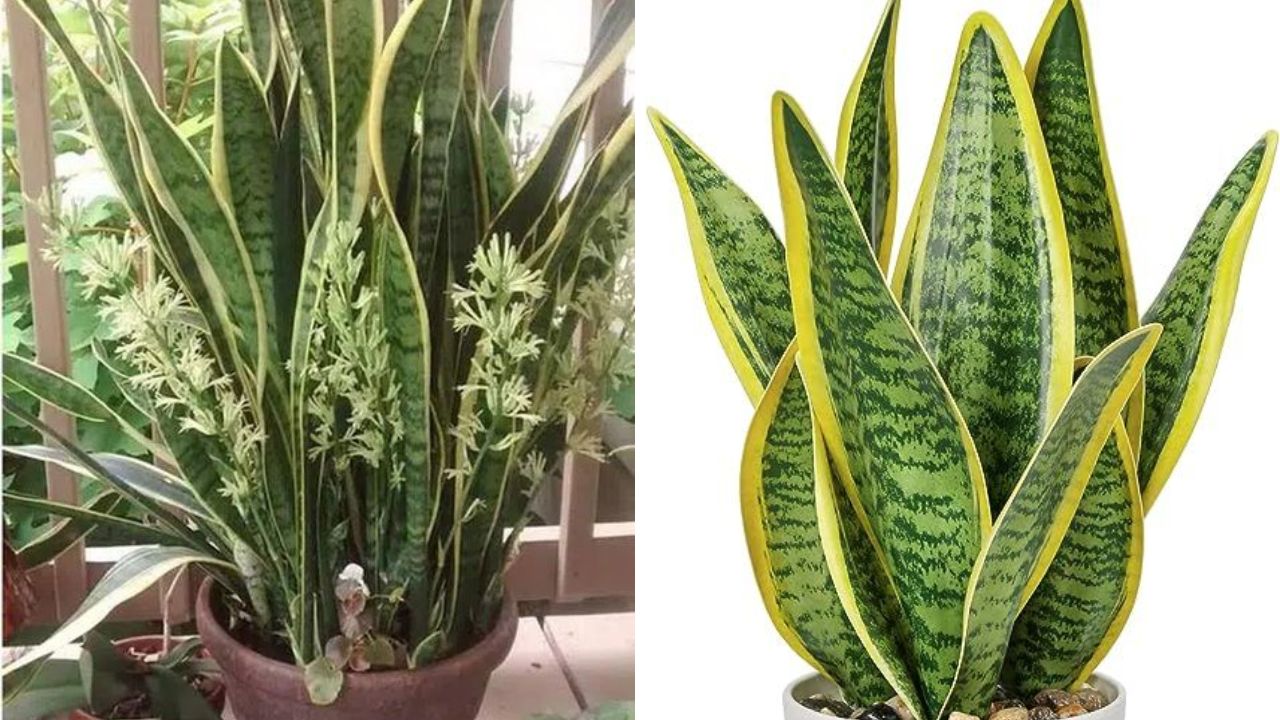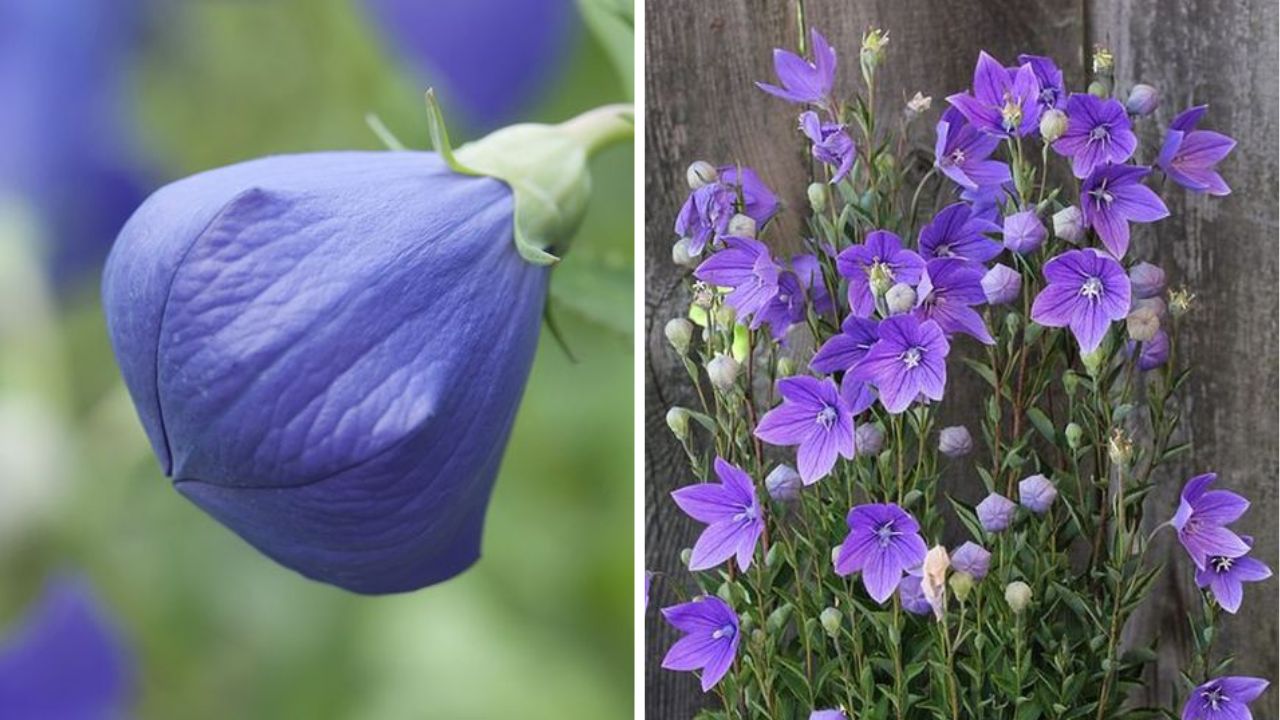Despite not resembling bells in appearance, balloon flowers (Platycodon grandiflorus) are clump-forming perennials that belong to the bellflower family of plants that are easy to grow. Instead, the 2- to 3-inch star-shaped flowers are produced by swollen, balloon-like buds. This easy-to-grow variety has vivid blue-violet blooms that last all summer, but some cultivars have pink and white flowers. Balloon flowers develop quickly so they can bloom in their first year; they are typically planted in the spring after the risk of frost has gone.
Table of Contents
ToggleBalloon Flowers Plant Overview

| Common Name | Balloon flower, Chinese bellflower, Japanese bellflower |
| Botanical Name | Platycodon grandiflorus |
| Family | Campanulaceae (bellflower) |
| Plant Type | Herbaceous perennial |
| Mature Size | 1– 2 1/2 ft. tall, 1–1 1/2 ft. wide |
| Sun Exposure | Full sun to part shade |
| Soil Type | Rich, loamy, medium moisture, well-draining |
| Soil pH | 5.5–7.5 (acidic to slightly alkaline) |
| Bloom Time | Summer |
| Flower Color | Blue-violet, white, pink |
| Hardiness Zones | 3–8 (USDA) |
| Native Area | China, Korea, Japan, Russia |
Balloon Flower Care

Because of their wide-open petals, balloon flowers are great plants for border gardens or rock gardens. They also draw pollinators like bees and butterflies. These perennials are not vigorous spreaders, although they will self-sow their seed. All things considered, balloon flowers require very little care and are resistant to pests and diseases, except for root rot in regions with high rainfall.
Balloon flowers, especially the taller types, might get a little floppy. To allow them to sustain one another, you can stake them or plant them in clumps. Start with a seed or start your balloon flowers from a nursery plant.
Light Requirements
Planting balloon flowers in full sun (at least six hours of sunlight on most days) will yield the most blossoms. They will, however, tolerate some shade and may even prefer it when the afternoon light isn’t too strong.
Soil and Potting

Balloon flowers like loamy, organically rich soil that drains well. Clay and other thick soils are unsuitable for their growth. They prefer soil with a pH between 5.5 and 7.5.
Watering
Young plants should have continuously damp but not soggy soil. Once grown, balloon flowers can withstand brief droughts but need a reasonable level of soil moisture. They won’t require a lot of additional irrigation until the soil dries out due to a protracted drought.
Temperature and Environment
Hardy balloon flowers thrive in USDA growing zones 3 through 8. They prefer temperatures between 60 and 80 degrees Fahrenheit, but if there is some midday shade, they may tolerate higher temperatures. In the fall, established plants will die back into the ground due to frost, which can also kill off immature plants. If balloon flowers have the proper amount of soil moisture, they can withstand both dry and humid air conditions.
Fertilization
In rich soil, balloon flowers usually don’t require additional fertilizer. However, they can recover some of the energy they use up blooming during the growing season by covering themselves in compost in the fall. Use an all-purpose, slow-release fertilizer in the early spring if your soil is poor.
Types of Balloon Flowers
Balloon flowers come in various well-liked kinds, such as:
Platycodon grandiflorus Astra series:This variety produces blue, pink, or white double blooms with ten petals. They’re the perfect option to begin with seeds.
P. grandiflorus Fuji series: With 30-inch stems with blue, pink, or white blossoms, this is the tallest and most widely available variety.
P. grandiflorus ‘Komachi’: This variety’s purple-blue blooms continue to resemble fluffy pillows even after they have finished blooming.
P. ‘Sentimental Blue’: This miniature cultivar has several 1- to 2-inch purple flowers and grows to a height of around 6 inches.
Pruning
Balloon flowers don’t usually require pruning, however, you can do so for aesthetic purposes. You can trim down long stems by about half in late April to get stockier plants. This may lessen the likelihood of the plants toppling over. Additionally, deadheading (removing spent flowers) will maintain the attractive appearance and continuous flowering of your plants. Take out only the faded blossoms; leave the stalk intact. The buds that are still open on the stem will keep opening.
Propagating Balloon Flowers
Gardeners love balloon flowers because they are reliable and quick performers, so the more the better. However, you must be cautious when propagating the plant. Balloon flowers do not typically lend themselves to division propagation because their deeply ingrained taproots dislike being disturbed. Stem cuttings can be used for propagation as an alternative.
- Trim a 4-inch piece of stem with sterile, sharp pruners, then remove the lower foliage to reveal the bare stem.
- If desired, apply a rooting hormone to the exposed stem before planting it in a moist pot.
- While you wait for roots to take hold, keep the soil damp but not wet.
- You’ll know roots have grown when you witness leaf growth and feel resistance when you gently tug on the cutting. At that point, the plant is prepared to be moved into the garden.
How to Grow Balloon Flowers From Seed?
Using seed starter mix or regular potting soil, start seeds indoors in the early spring, six to eight weeks ahead of the anticipated last frost date in your location. Apply just 1/16 inch of soil to the seeds. Until the seeds sprout, place the container in a warm area. You can move the seedlings outside once the weather warms. If you decide to sow seeds directly in your garden, wait until after the latest frost date, as they probably won’t bloom the first year.
Common Pests and Plant Diseases
Slugs and snails are typically drawn to balloon flowers and many other outdoor blooming plants; these pests can be lured off the plants with bait. On the other hand, the plant can have fungal leaf spot, powdery mildew, gray mold, crown rot, or root rot. Plants may freeze to death due to crown and root rot. It is normally possible to treat leaves that exhibit blotching, mottling, or powdery patches with a fungicide. Remove gray mold from plants as soon as possible to stop it from spreading, and treat any surviving plants with a preventive fungicide.
Also Read: Calla Lily Complete Guide To Grow And Care





